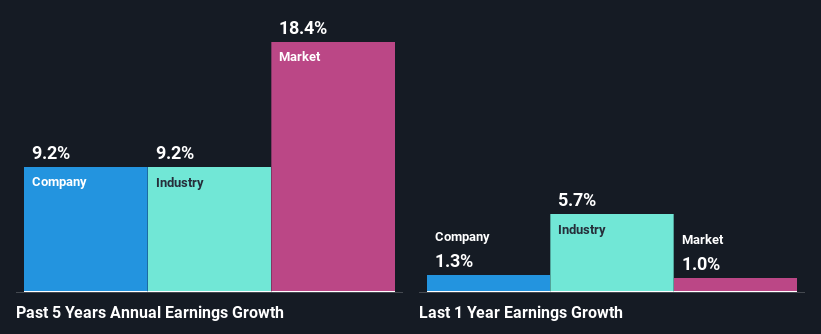Will Weakness in Alimentation Couche-Tard Inc.'s (TSE:ATD) Stock Prove Temporary Given Strong Fundamentals?
It is hard to get excited after looking at Alimentation Couche-Tard's (TSE:ATD) recent performance, when its stock has declined 2.7% over the past month. But if you pay close attention, you might gather that its strong financials could mean that the stock could potentially see an increase in value in the long-term, given how markets usually reward companies with good financial health. Particularly, we will be paying attention to Alimentation Couche-Tard's ROE today.
Return on equity or ROE is an important factor to be considered by a shareholder because it tells them how effectively their capital is being reinvested. In other words, it is a profitability ratio which measures the rate of return on the capital provided by the company's shareholders.
See our latest analysis for Alimentation Couche-Tard
How Do You Calculate Return On Equity?
The formula for ROE is:
Return on Equity = Net Profit (from continuing operations) ÷ Shareholders' Equity
So, based on the above formula, the ROE for Alimentation Couche-Tard is:
22% = US$2.9b ÷ US$13b (Based on the trailing twelve months to February 2024).
The 'return' is the amount earned after tax over the last twelve months. One way to conceptualize this is that for each CA$1 of shareholders' capital it has, the company made CA$0.22 in profit.
Why Is ROE Important For Earnings Growth?
Thus far, we have learned that ROE measures how efficiently a company is generating its profits. We now need to evaluate how much profit the company reinvests or "retains" for future growth which then gives us an idea about the growth potential of the company. Generally speaking, other things being equal, firms with a high return on equity and profit retention, have a higher growth rate than firms that don’t share these attributes.
A Side By Side comparison of Alimentation Couche-Tard's Earnings Growth And 22% ROE
To begin with, Alimentation Couche-Tard has a pretty high ROE which is interesting. Additionally, the company's ROE is higher compared to the industry average of 16% which is quite remarkable. Probably as a result of this, Alimentation Couche-Tard was able to see a decent net income growth of 9.2% over the last five years.
Next, on comparing Alimentation Couche-Tard's net income growth with the industry, we found that the company's reported growth is similar to the industry average growth rate of 9.2% over the last few years.
Earnings growth is an important metric to consider when valuing a stock. What investors need to determine next is if the expected earnings growth, or the lack of it, is already built into the share price. By doing so, they will have an idea if the stock is headed into clear blue waters or if swampy waters await. What is ATD worth today? The intrinsic value infographic in our free research report helps visualize whether ATD is currently mispriced by the market.
Is Alimentation Couche-Tard Efficiently Re-investing Its Profits?
Alimentation Couche-Tard has a low three-year median payout ratio of 13%, meaning that the company retains the remaining 87% of its profits. This suggests that the management is reinvesting most of the profits to grow the business.
Besides, Alimentation Couche-Tard has been paying dividends for at least ten years or more. This shows that the company is committed to sharing profits with its shareholders. Upon studying the latest analysts' consensus data, we found that the company's future payout ratio is expected to rise to 16% over the next three years.
Summary
Overall, we are quite pleased with Alimentation Couche-Tard's performance. Particularly, we like that the company is reinvesting heavily into its business, and at a high rate of return. Unsurprisingly, this has led to an impressive earnings growth. On studying current analyst estimates, we found that analysts expect the company to continue its recent growth streak. To know more about the latest analysts predictions for the company, check out this visualization of analyst forecasts for the company.
Have feedback on this article? Concerned about the content? Get in touch with us directly. Alternatively, email editorial-team (at) simplywallst.com.
This article by Simply Wall St is general in nature. We provide commentary based on historical data and analyst forecasts only using an unbiased methodology and our articles are not intended to be financial advice. It does not constitute a recommendation to buy or sell any stock, and does not take account of your objectives, or your financial situation. We aim to bring you long-term focused analysis driven by fundamental data. Note that our analysis may not factor in the latest price-sensitive company announcements or qualitative material. Simply Wall St has no position in any stocks mentioned.
Have feedback on this article? Concerned about the content? Get in touch with us directly. Alternatively, email editorial-team@simplywallst.com

 Yahoo Finance
Yahoo Finance 
